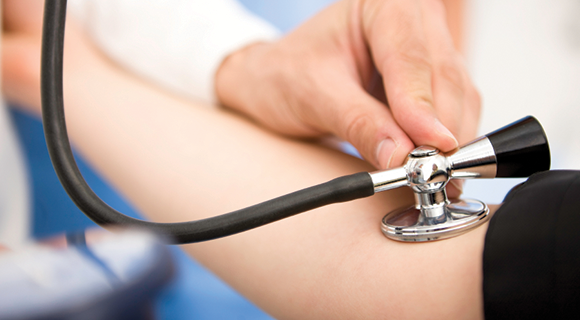The average American consumes between 3,500 to 5,000 mg of sodium per day. 80 percent of that sodium comes from restaurants, fast food, and processed foods — not the salt shaker.
How much sodium is safe?
Most people can have up to 2,300 mg of sodium per day.
The new 2010 U.S. Dietary Guidelines recommend only 1,500 mg per day for these higher-risk groups:
- African Americans
- people with high blood pressure
- people with diabetes
- people with chronic kidney disease
- people over the age of 50
Why cut back on sodium?
A study in the British Medical Journal found that sodium actually increases the risk of heart attack and stroke in everyone — even those without high blood pressure.* The study also found that by cutting out just 1,000 mg of sodium a day (½ teaspoon of salt) you can decrease your risk of heart attack or stroke by 25 percent.
If you have high blood pressure, reducing sodium has been shown to lower blood pressure after only a few weeks. When combined with diet and exercise, eating less salt can also reduce the amount of medication you need to take to get your blood pressure under control.
How much sodium are you really eating?
While processed foods and restaurant foods are the largest source of salt, all foods contain some sodium.
Think about your typical day’s meals. If you ate these mostly unprocessed foods, you’d only be consuming about 1,000 mg of sodium per day.
Sprinkle on just 1/4 tsp of salt and you’ll add 500 mg of sodium to your day. That’s a total of about 1,500 mg of sodium in 1 day.
| Food | Serving | Sodium |
|---|---|---|
| Milk | 2 cups | 215 mg |
| Chicken | 6 oz | 120 mg |
| Fresh vegetables | 2 ½ cups | 100 mg |
| Fruit | 3 pieces | 6 mg |
| Whole grain bread | 3 slices | 450 mg |
| Whole wheat pasta | 2 ½ cups | 20 mg |
| Trans-fat-free margarine | 3 tsp | 95 mg |
Cooking at home more often is a great start. But processed foods that may already be in your kitchen can push you over the recommended sodium limits.
- 1 tablespoon of soy sauce has 1,000 mg of sodium
- 1 package of Chicken Top Raman has 1,365 mg of sodium
- 1 ounce of American cheese has 400 mg of sodium
Eat in a restaurant for 1 meal per day and you’ll quickly go over the recommended sodium limits. Consider these popular restaurant foods:
| Food | Sodium |
|---|---|
| Chicken Caesar salad at Costco food court | 2,680 mg |
| PF Chang’s double pan-fried noodles with pork | 7,900 mg |
| Panda Express 2 entrée meal with orange chicken | 2,340 mg |
| McDonald’s premium grilled chicken classic sandwich | 1,190 mg |
| El Pollo Loco pollo bowl | 1,590 mg |
| In-N-Out double-double burger | 1,440 mg |
Salt swaps
Cut back on sodium with these swaps:
- Cook at home.
- Eat fewer processed, packaged, and canned foods.
- Eat more fresh foods prepared without salt.
- Eat out less often. Aim for 1 day a week.
- Use lemon juice, herbs, wine, or spices instead of salt.
Your taste buds will get used to the lower amount of sodium in just 3 to 4 weeks.
Remember that even a small decrease in sodium can have a big effect on your risk of a heart attack or stroke.
*Cook, Nancy R, “Long term effects of dietary sodium reduction…” BMJ 2007; 334 (7599): 885-888.
Reviewed by: Carole Bartolotto, MA, RD, May 2011
Additional Kaiser Permanente reviewers
©2011 Kaiser Permanente






